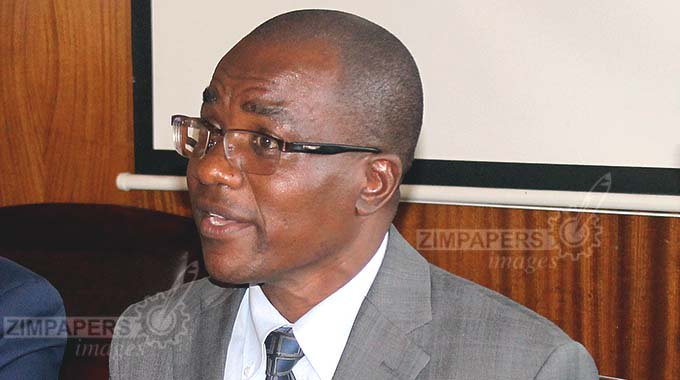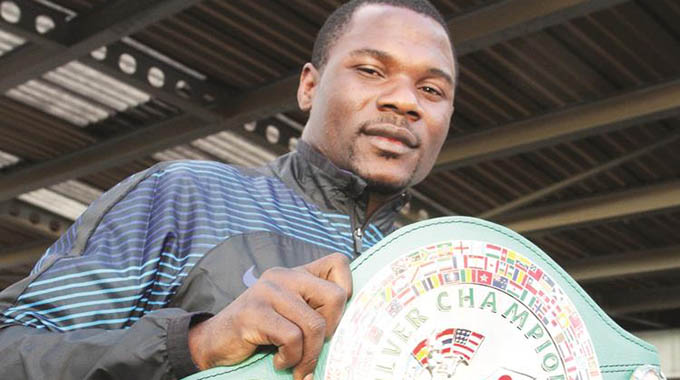Equipment must be chosen by end users, says Moyo

Health and Child Care Minister Dr Obadiah Moyo recently set up a technical committee to coordinate the procurement of hospital equipment, which is driven by the needs of end users. The committee is operating under the National Pharmaceutical Company (NatPharm).
The development comes at a time when medical professionals have voiced concern over obsolete equipment and some machines and instruments that are not user friendly. Our Reporter Paidamoyo Chipunza (PC) spoke to Dr Moyo on this and other initiatives.
PC: When was the procurement committee for the equipment set up and who are the members?
Dr Moyo: The committee was set up Thursday January 16 this year, and Dr Hativagone Chifamba is the chairman. The committee was tasked to see to it that hospital personnel get the tools they require. Dr Chifamba will be steering this committee alongside other NatPharm board members.
So, it’s a committee of NatPharm responsible for procurement of equipment. Dr Chifamba is a fully qualified specialist anaesthetist and is very familiar with hospital equipment and has always been involved in the purchasing, selection and evaluation of anaesthetic machines and medicines.
PC: How will this committee be working?
Dr Moyo: They are not going to be working alone. While Dr Chifamba is the chair, she is expected to formulate the full committee, which is comprised of representatives from all the central hospital departments and provincial medical directors and their teams. She will, therefore, coordinate the whole exercise to ensure that each and every specialist department is represented by the end users of that particular department. All the various disciplines will be represented. The committee has since been given three weeks to come up with a composite list of medical equipment with estimated costs, after which funding mechanisms would be put in place.
PC: What triggered this initiative?
Dr Moyo: We are moving away from purchases of equipment outside the end users’ jurisdiction. We want every piece of equipment like what we have done with medicines, to be selected by the end users because they are the ones who will be using the equipment.
You can’t have a situation which happened with some previous equipment tenders a few years ago, where equipment suddenly arrived in departments to the surprise of the end users who were not aware who had chosen the equipment.
So, we do not subscribe to a system that is not end-user driven.
In setting up this committee we want the end user to participate. So, the CEOs and clinical directors from hospitals will select representatives from each and every department to be seconded to the main committee chaired by Dr Chifamba. Provincial directors and their medical superintendents will also select representatives from their institutions to be in the meetings.
So, nobody will be left behind. Hospital equipment engineers and technicians will also be part and parcel of this committee to make sure everything is done properly.
PC: What do you seek to achieve?
Dr Moyo: Equipment is a key driver in ensuring that the workplace is conducive in the hospitals.
We need to make sure that we come up with ideal lists of equipment for use in our health institutions at all levels. This encompasses the equipment we require at rural healthcare centres, district, and provincial and tertiary hospital levels.
It does not necessarily mean that if we identify the ideal requirements we will be purchasing everything in one go. The committee will look at the demand at a particular institution and then come up with a purchasing plan. The other issue is that once a product list has been finalised, the procurement systems to be used will vary.
For instance, it is not relevant to make outright purchases for dialysis machines, laboratory analysers or X-ray diagnostic equipment, as placements would be more relevant. These should come as placements and we just buy the consumables to be used on the equipment.
Instead of having to pay double where you have to buy the equipment and then the consumables, we don’t have to do that.
All the money that is supposed to buy the equipment will be put into consumables by allowing the companies to place their machines in our institutions.
The selection of machines will be done by end users through transparent tender processes.
With equipment placement schemes, the companies are the ones who maintain the equipment and upgrade, and replace it as it ages or as new technologies come into play.
PC: And where do service contracts come in?
Dr Moyo: Service contracts are a must. It is essential we have service contracts for all these machines. Any piece of equipment that is bought must have a service contract.
Without service contracts, you are wasting your time and money. So, we want service contracts to be available. A case in point is radiotherapy equipment. We have said that we need to see all these machines with full service contracts. We must make sure that all the equipment has start-up consumables. If you buy a machine with no consumables, then you won’t be able to run it. So, we must have at least six-month stock of start-up consumables. Otherwise it will be a white elephant.
That committee has got a lot of work to do and it’s a continuous exercise. As a ministry, we are just giving the guidelines of what we want to see happening. But the actual prescription should be done by the end users.
They are the ones who should be able to do that. We are saying we don’t want to buy machines which are of poor quality. We don’t want to buy equipment which will last for only three months and then it’s broken down. It must be the popular brands which are robust, durable and accurate when it comes to diagnostics.
PC: We have heard of cartels in the supply and distribution of medical drugs.
Does this also apply to medical equipment and how will this committee go about this system?
Dr Moyo: The committee will directly deal with manufacturers in order to secure better deals, but we will also not undermine the role of their local representatives.
It is in the interest of the manufacturer to have local representatives and also for transferring technology.
If the manufacturers decide to have their own representatives, we can’t stop them from doing that. But when it comes to the original purchase, it will be done directly.
Anything else to do with back-up service, naturally we know that the manufacturer will want to identify a local representative. We also want that, in terms of back-up service, for the purpose of ensuring that there is an immediate response to any machine which would have broken down. That we accept. It is necessary. But the initial purchase has to be done directly with the manufacturer.
The end users will be sent to the manufacturers’ factories or where the equipment is being used for evaluation purposes.
If there are three or four companies who have submitted their equipment for tendering, we want to take our specialists to the respective factories or hospitals where these machines are being used if these are new brands for evaluation, so that they see the equipment in use for themselves and satisfy themselves with the performance of the equipment, and the relevance for their needs.
PC: That’s as far as equipment is concerned, what about issues of medical drugs and sundries required in any functional health system?
Dr Moyo: We are going to have a series of line-ups like this in various areas and announcements will be done in due course.










Comments